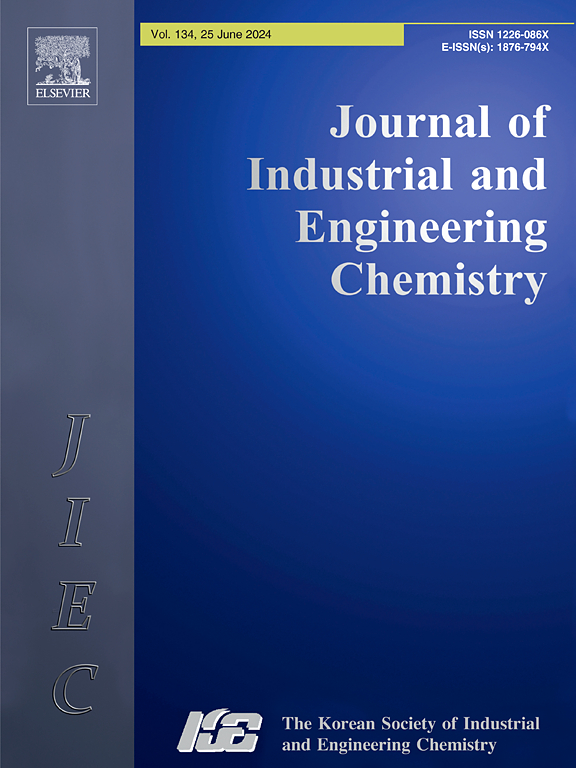Hydrogen production for a decarbonized future: a review of production technologies
IF 5.9
3区 工程技术
Q1 CHEMISTRY, MULTIDISCIPLINARY
Journal of Industrial and Engineering Chemistry
Pub Date : 2025-07-20
DOI:10.1016/j.jiec.2025.07.047
引用次数: 0
Abstract
Hydrogen is increasingly viewed as an essential element in the global transition toward low-carbon and sustainable energy systems. This review systematically evaluates the major hydrogen production pathways, spanning mature fossil-based processes, steam methane reforming, dry methane reforming, catalytic methane decomposition, and coal gasification, to emerging renewable routes including biomass gasification, water electrolysis, photolytic methods, and biological/biochemical processes. Each technology is critically assessed through integrated techno-economic and environmental analyses, examining efficiency, carbon intensity, technological readiness levels, and scalability potential. Life cycle assessments reveal that conventional methods, while cost-effective ($1.25–2.27/kg H面向脱碳未来的氢生产:生产技术综述
氢越来越被视为全球向低碳和可持续能源系统过渡的重要因素。本文系统地评价了主要的制氢途径,从成熟的化石制氢、蒸汽甲烷重整、干甲烷重整、催化甲烷分解和煤气化,到新兴的可再生制氢途径,包括生物质气化、水电解、光解方法和生物/生化过程。通过综合技术经济和环境分析,检查效率、碳强度、技术准备水平和可扩展性潜力,对每种技术进行严格评估。生命周期评估显示,传统方法虽然具有成本效益(1.25-2.27美元/千克H2),但会产生大量的二氧化碳排放(9-20 千克二氧化碳当量/千克H2)。相反,可再生能源对环境的影响要小得多,但面临限制商业部署的经济和技术障碍。确定的主要挑战包括催化剂失活,电解槽的高资本成本以及光解系统的低效率(约5%)。审查确定了战略研究重点:开发耐用、成本效益高的催化剂;推进高温电解技术;整合可再生能源系统;缩放光生物平台。该分析为研究人员、行业利益相关者和政策制定者提供了可操作的见解,以加速氢技术的开发和部署,支持向可持续的氢能源经济过渡,并与净零排放目标保持一致。
本文章由计算机程序翻译,如有差异,请以英文原文为准。
求助全文
约1分钟内获得全文
求助全文
来源期刊
CiteScore
10.40
自引率
6.60%
发文量
639
审稿时长
29 days
期刊介绍:
Journal of Industrial and Engineering Chemistry is published monthly in English by the Korean Society of Industrial and Engineering Chemistry. JIEC brings together multidisciplinary interests in one journal and is to disseminate information on all aspects of research and development in industrial and engineering chemistry. Contributions in the form of research articles, short communications, notes and reviews are considered for publication. The editors welcome original contributions that have not been and are not to be published elsewhere. Instruction to authors and a manuscript submissions form are printed at the end of each issue. Bulk reprints of individual articles can be ordered. This publication is partially supported by Korea Research Foundation and the Korean Federation of Science and Technology Societies.

 求助内容:
求助内容: 应助结果提醒方式:
应助结果提醒方式:


